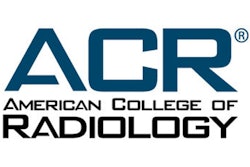
On January 1, 2022, medical practices will have to comply with the federal No Surprises Act (NSA) unless their state has a similar law already in effect. The federal legislation passed in December 2020 is intended to allow providers to receive a reasonable payment from insurers for services to non-network patients without putting those patients in the middle of a payment dispute.
 Sandy Coffta.
Sandy Coffta.At the end of September, long-awaited regulations that will govern the details of its implementation were issued and were met with displeasure by healthcare providers. For example, the American College of Radiology (ACR) wrote in its detailed summary of the rule that it "is disappointed that the regulations violate the intent of the No Surprises Act (NSA) by making the Qualified Payment Amount (QPA) the primary determinant of physician payment rates in the independent dispute resolution process."
Earlier this year, we provided a summary of the new law and a suggested an action plan for practices to use. The steps we outlined are important for compliance with the new law, including the following:
- Determine if the law applies to your practice.
- Determine which payors are out of network.
- Develop an internal process.
- Understand the patient's liability.
- Review contracting with payors.
However, what was unknown until the September regulations were issued was how the practice would resolve a payment dispute with the payer using the Independent Dispute Resolution (IDR) system that was loosely defined in the law. The process includes several distinct steps that must be followed exactly in order to have an enforceable result:
- Open negotiation period
- Initiation of the IDR process
- Selection of a certified IDR entity
- Payment determination
Open negotiation period
Once the practice decides that it is not willing to accept the level of payment (or denial of payment) made by a payor for a particular out-of-network service, it has 30 days1 to open a negotiation with the payor. The 30-day period begins on the date the practice receives the initial payment or notice of denial, so an internal process that gives prompt attention to the accounts of out-of-network patients is essential.
Written notice, which could be on paper or electronic, must be given to the payer to begin the negotiation, and it must include the following:
- The date the item or service was furnished
- The service code (typically the current procedural terminology or CPT code)
- The initial payment amount (if any)
- An offer of the payment the practice would accept
- Contact information for the practice
The negotiation period can last for up to 30 days, beginning with the date of the written notice; it ends if the parties agree on an out-of-network rate.
Initiation of the IDR process
If they cannot agree, then the 30-day period must run out before the next step can begin. The federal IDR process must be initiated during the four-day period beginning on the 31st day following the initiation of the open negotiation period by sending a written notice (on paper or electronically) to the other party and to the federal departments administering the process.2 A federal portal for initiating the IDR will become available once the law takes effect, although it is unknown if using the portal will satisfy the notice to both the payer and the federal agencies.
Selection of a certified IDR entity
The written notice must include the initiating party's preferred certified IDR entity chosen from the list that will be available from the federal portal. The chosen entity will be accepted unless the other party objects within three days. If an objection is filed, then the objecting party must propose an alternative; if no agreement is reached within another three days, then the federal agencies will randomly select an entity.
Once the certified IDR entity is chosen, each party must submit within 10 days an offer for a payment amount of the item or service in dispute, along with other information related to the offer. Providers must include information on the size of the practice and the practice specialty, but they may not submit information that relates to usual and customary charges, billed amounts, and public payer rates (such as Medicare).
Payment determination
The methodology to be used in the determination of the out-of-network payment is the area of greatest concern to healthcare providers. The No Surprises Act states that the IDR entity shall consider several factors when evaluating the payment rate:
- Offers by both parties
- Qualifying Payment Amount (QPA)
- Circumstances, including training, experience, quality, and outcomes measurements
- Market shares of parties
- Acuity of patients/complexity of cases
- Teaching status, case mix, scope of services of facility
- Good faith efforts by parties to contract and contracting rate history from the last four years
The QPA is generally the plan or issuer's median contracted rate for the same or similar service in the specific geographic area. The ACR's summary explains that rather than weighting the QPA as one of the seven factors to consider, the interim final rule (IFR) issued in September "specifies that the certified IDR entity must begin with the presumption that the QPA is the appropriate out-of-network rate for the qualified IDR item or service under consideration.
The IFR also states that the certified IDR entity must select the offer closest to the QPA unless the certified IDR entity determines that "credible information" submitted by either party clearly demonstrates that the QPA is materially different from the appropriate out-of-network rate."
The ACR objected to this methodology in its September 7, 2021, letter, writing that "the QPA calculation methodology as outlined in the IFR does not represent "real world" median contracted rates. The primary issue with the calculation methodology is the treatment of a contract as a datapoint in the median calculation rather than individual claims representing data points. There is no weight given to the number of claims or services provided under a contract. As a result, there is potential skewing of the QPA calculation downward."
The certified IDR entity must select one of the submitted offers not later than 30 days after the selection of the entity. The decision is binding on both parties, and the party that initiated the IDR process may not initiate another process involving the same other party for the same or similar item or service during the next 90 calendar days.
Conclusion
The NSA is scheduled to go into effect on January 1, 2022, although some say that it could be delayed, and parts of the NSA have already been delayed. For example, the requirement that patients be given advance notice of a provider's out-of-network status has been delayed until July 1, 2022, and the requirement that payers must provide an Advance Explanation of Benefits will not be enforced until July 1, 2022.
Provider organizations such as the ACR, the Radiology Business Management Association (RBMA) and others are requesting that Congress take action to revise the regulations that give what they feel is a disproportionate weight to the QPA, and they support legislation proposed by Congressmen Tom Suozzi (D-NY) and Brad Wenstrup (R-OH).
We will continue to monitor this important new legislation so that you have the latest information to optimize your practice's results.
Footnotes
- It is important to note that the regulations specify "business days" rather than "calendar days" for all of the periods specified in the law, with the exception of the 90-calendar-day "cooling off period" following an IDR settlement. Business days include only Monday through Friday, and federal holidays are not counted.
- The federal agencies involved with administering the No Surprises Act include the Department of Health and Human Services (HHS), Department of Labor (DOL), and the Treasury Department via the Internal Revenue Service.
Sandy Coffta is the vice president of client services at Healthcare Administrative Partners.
The comments and observations expressed are those of the author and do not necessarily reflect the opinions of AuntMinnie.com.



















